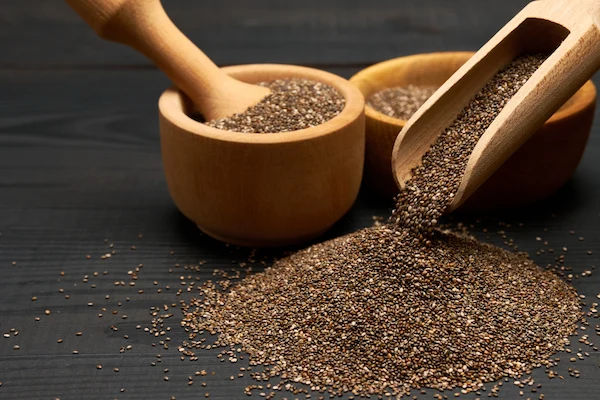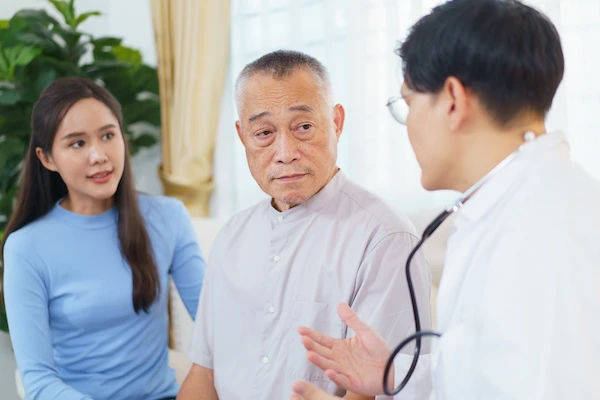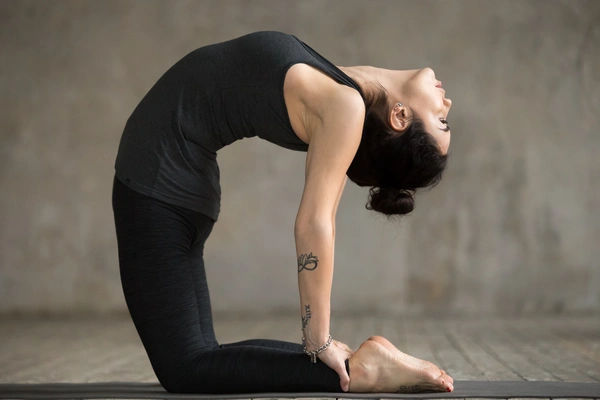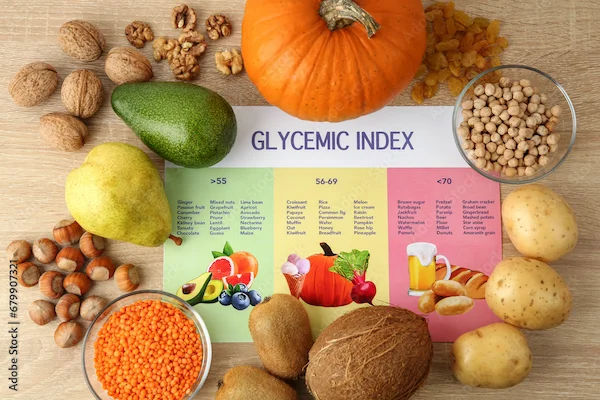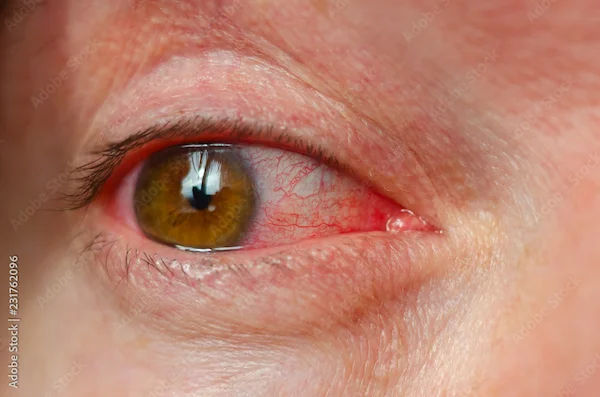Beat the Heat: Your Essential Guide to Heatwave Effects and Safety
Know about the heat wave, what it is, the role of humidity, its impact on health, who is vulnerable and how to prevent it and more.

Written by Dr. Shaik Abdul Kalam
Reviewed by Dr. D Bhanu Prakash MBBS, AFIH, Advanced certificate in critical care medicine, Fellowship in critical care medicine
Last updated on 19th Sep, 2025

Introduction
As thermometers soar and weather alerts flash across our screens, heatwaves are becoming a more frequent and intense reality of modern summers. But beyond the discomfort of sticky skin and sleepless nights lies a serious public health threat. Understanding the effects of a heatwave on your body is not just about comfort; it's a crucial step in safeguarding your health and the well-being of your loved ones. This comprehensive guide will walk you through everything you need to know: from recognising the early warning signs of heat-related illness to implementing effective prevention strategies. We'll demystify the science behind the scorching temperatures and provide you with actionable, life-saving advice to navigate the hottest days with confidence.
What Exactly is a Heatwave?
It includes the following:
Defining a Heatwave: More Than Just a Hot Day
A heatwave is not simply a subjective feeling of a hot day. Meteorologically, it is defined as a period of abnormally and uncomfortably hot weather that lasts for two or more days, with temperatures significantly above the historical average for a region. What constitutes a heatwave in London would be a typical summer day in Dubai. This relative nature means communities unaccustomed to heat are often the most vulnerable to its effects.
Consult a General practitioner for Personalised Advice
The Role of Humidity: Why the "Feels Like" Temperature Matters
The official temperature reading often doesn't tell the whole story. Humidity plays a massive role in how we experience heat. High humidity levels prevent sweat from evaporating efficiently from our skin, which is the body's primary cooling mechanism. This results in a "feels like" or heat index temperature that can be drastically higher than the actual air temperature. A 95°F (35°C) day with 70% humidity can feel like a staggering 125°F (52°C), dramatically increasing the risk of heat-related illness.
How Heatwaves Affect Your Body: The Direct Health Impacts
When exposed to extreme heat, your body works overtime to maintain its core temperature of around 98.6°F (37°C). This extra strain can lead to a spectrum of conditions.
Heat Rash: The Uncomfortable First Sign
Often, the mildest effect, heat rash, appears as red clusters of small blisters that look like pimples. It typically occurs on the neck, chest, groin, or in elbow creases where sweat gets trapped in ducts. Keeping the affected area cool and dry is the best treatment.
Heat Cramps: Painful Muscle Spasms
These are heavy sweating-induced muscle pains or spasms, usually in the abdomen, arms, or legs. Heat cramps are often an early sign that the body is struggling with the heat and is depleted of electrolytes. They frequently affect athletes or outdoor workers.
Heat Exhaustion: Your Body's Warning Signal
This is a more serious condition. Symptoms of heat exhaustion include:
Heavy sweating
Cold, pale, and clammy skin
Fast, weak pulse
Nausea or vomiting
Muscle cramps
Tiredness or weakness
Dizziness or fainting
If you experience these signs, it is critical to cool down immediately. Move to a cooler place, sip water, and apply cool, wet cloths to your body. If symptoms worsen or last longer than an hour, it's time to seek help.
Heatstroke: A Life-Threatening Medical Emergency
Heatstroke is the most severe heat-related illness and requires immediate medical attention. It occurs when the body's temperature regulation system fails, and the core temperature rises to 104°F (40°C) or higher. Key signs include:
Hot, red, dry, or damp skin (sweating may have stopped)
Confusion, agitation, or slurred speech
Loss of consciousness
Rapid, strong pulse
This is a medical emergency. Call for an ambulance immediately. While waiting, move the person to a cooler place and use any method available to cool them down (cool cloths, ice packs on armpits and groin, a cool bath). If you are unsure about the severity of your symptoms, consulting a doctor online with Apollo24|7 can provide immediate guidance.
Who is Most Vulnerable to Extreme Heat?
While anyone can succumb to heat, certain groups are at a higher risk and need extra vigilance.
The Elderly and Young Children
The elderly are less able to regulate body temperature and may have chronic conditions or be on medications that impair their response to heat. Young children, especially infants, have underdeveloped temperature control systems and rely entirely on caregivers to keep them cool and hydrated.
People with Chronic Medical Conditions
Individuals with heart disease, high blood pressure, respiratory illness, or diabetes are more susceptible. The cardiovascular system is already under stress, and extreme heat adds a significant additional load.
Outdoor Workers and Athletes
Those who exert themselves physically in hot environments are at constant risk due to increased internal heat generation and fluid loss through sweat. They require structured rest breaks, shade, and aggressive hydration strategies.
Proactive Protection: How to Prevent Heat-Related Illness
Prevention is always better than cure, especially with heat.
Hydration Strategies: What to Drink and How Much
Don't wait until you're thirsty to drink. Drink water consistently throughout the day. During extreme heat, avoid alcohol, caffeine, and sugary drinks, as they can cause dehydration. For intense sweating, an electrolyte-replenishing drink can be beneficial. A good rule is to monitor your urine colour—light yellow means you're well-hydrated.
Smart Clothing and Sun Protection
Wear lightweight, light-colored, and loose-fitting clothing. A wide-brimmed hat and sunglasses are essential outdoors. Always apply a broad-spectrum sunscreen (SPF 30 or higher) 30 minutes before going out and reapply every two hours.
Keeping Your Home Cool Without AC
Use curtains or blinds to block out the sun during the hottest part of the day. Create cross-ventilation by opening windows at night and using fans. If your home becomes unbearably hot, identify public cooling centres in your area, such as libraries or shopping malls.
First Aid and Response: What to Do in an Emergency
For Heat Exhaustion: Move to a cool place, loosen clothing, apply cool, wet cloths to the body, and sip water. If vomiting occurs or symptoms persist, seek medical attention.
For Heatstroke: CALL FOR AN AMBULANCE IMMEDIATELY. This is non-negotiable. Begin cooling the person by any means possible while waiting for help to arrive.
The Ripple Effect: Environmental and Societal Impacts
The effects of a heatwave extend far beyond individual health. They strain power grids as demand for air conditioning skyrockets, leading to blackouts. They can cause roadways to buckle and railway tracks to bend. Drought conditions worsen, increasing the risk of wildfires. The economic impact is also significant, affecting agriculture, retail, and worker productivity. Understanding these broader impacts highlights the importance of community-wide preparedness and resilience.
Conclusion
Navigating a heatwave successfully requires a blend of knowledge, preparation, and vigilance. By understanding the very real effects extreme heat has on our bodies and our communities, we can move from being vulnerable to being resilient. Remember the simple but critical steps: listen to your body, prioritise hydration, seek cool spaces, and always check on those who are most vulnerable. Heatwaves are a formidable force of nature, but they don't have to be a disaster. Empowered with this guide, you can take control of your safety and well-being, ensuring you and your family can stay healthy and cool all summer long.
Consult a General practitioner for Personalised Advice
Consult a General practitioner for Personalised Advice

Dr. Anand Ravi
General Physician
2 Years • MBBS
Bengaluru
PRESTIGE SHANTHINIKETAN - SOCIETY CLINIC, Bengaluru

Dr Syed Mateen Pasha
General Physician
2 Years • MBBS
Bengaluru
PRESTIGE SHANTHINIKETAN - SOCIETY CLINIC, Bengaluru

Dr. Syed Ismail Ali
General Practitioner
7 Years • MBBS
Hyderabad
Apollo 24|7 Clinic, Hyderabad

Dr. Johnson. S
General Practitioner
7 Years • MBBS MD(Preventive and social Medicine)
Pune
Apollo Clinic, Nigdi, Pune

Dr. Madhuri Sai Sreepada
General Practitioner
9 Years • MBBS
Hyderabad
BRIGHT SMILES MEDICARE & DENTAL CARE, Hyderabad
More articles from General Medical Consultation
Frequently Asked Questions
1. What is the difference between heat exhaustion and heatstroke?
Heat exhaustion is your body's warning sign, with symptoms like heavy sweating, cold/clammy skin, and dizziness. Heatstroke is a full-blown medical emergency where the body's cooling system fails, leading to a high temperature (104°F+), hot/dry skin, and confusion or unconsciousness. Heatstroke requires immediate medical help.
2. How much water should I drink during a heatwave?
There's no one-size-fits-all amount, but a general guideline is to drink more water than usual and not wait to feel thirsty. For most people, this will mean consuming several glasses throughout the day. Monitor your urine color—aim for light yellow.
3. Are fans effective during extreme heat?
Fans are effective at cooling you down when temperatures are below 95°F (35°C) by aiding sweat evaporation. However, in extreme heat (above 95°F), fans can actually blow hot air around and contribute to heat gain. In these conditions, air conditioning or seeking a cooler location is safer.
4. What are the best foods to eat in hot weather?
Opt for light, hydrating meals like salads, fruits (watermelon, berries, oranges), and vegetables (cucumber, celery). Avoid heavy, hot, and protein-rich meals, which can increase metabolic heat and warm your body.
5. How can I protect my pets during a heatwave?*
Ensure they have constant access to fresh, cool water and a shady place to rest. Never leave a pet in a parked car. Walk dogs early in the morning or late in the evening when surfaces are cooler to prevent burning their paws.
